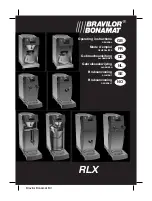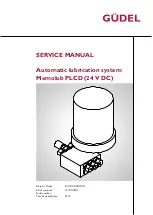
User Manual // Simpro Eurover
Original Instructions // English // v34.0 // April 2022 // Page
6
1.3
Mechanism
When the RAISE circuit is activated, an AC electric motor shaft rotates a sprocket wheel via a
gearbox. The sprocket teeth pull on the lifting chain, causing the sliding block to move
vertically in the mast. The bin cradle moves with the sliding block, and is inverted at the
appropriate height by a fixed roller running in a tipping track.
When the LOWER circuit is activated, the motor is reversed, causing the bin to be lowered
back to ground level. Electronic control systems allow the operator to raise or lower the bin in
a controlled manner.
1.4
Safe Lifting Capacity
The Safe Lifting Capacity of the standard Eurover is
350kg (770lb)
.
Some machines may be specified with different lifting capacities. Refer to the rating plate to
verify the Safe Lifting Capacity of any given machine.
Safe Lifting Capacity is a gross figure, referring to the weight of the bin, its contents, and
any other external objects which have been placed on the cradle.
Never attempt to lift bins heavier than the
machine’s rated
Safe Lifting Capacity.
1.5
Duty cycle
The duty cycle of the Eurover depends on various environmental factors and the manner in
which the machine is used. The figures given below are estimates only.
1.6
Service life
The nominal service life of the Eurover is as follows:
Average Gross Bin Weight
Intended operational life
< 200kg
100,000 cycles
200kg
–
300kg
75,000 cycles
300kg
–
350kg
50,000 cycles
1.7
Noise emissions
The noise emissions of the Eurover do not usually
exceed ~60 dB(A) at the operator’s ear.
Hearing protection is recommended if operating the machine for extended periods.
Duty Cycle (tipping ~250kg per bin at 2200mm)
Net throughput
Number of bins
Units
7,500kg
30 bins
Per hour







































